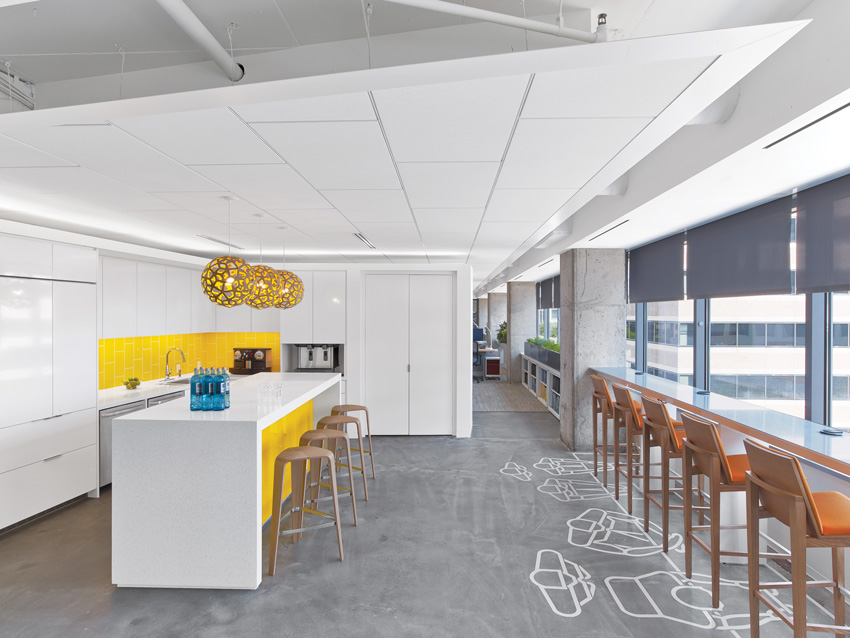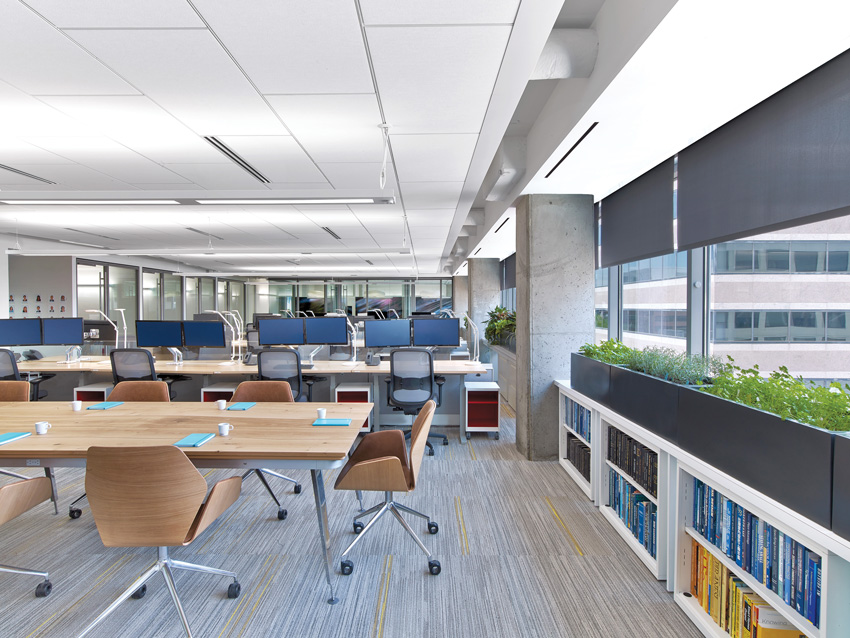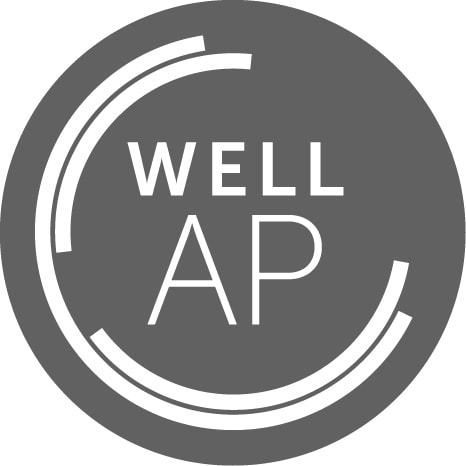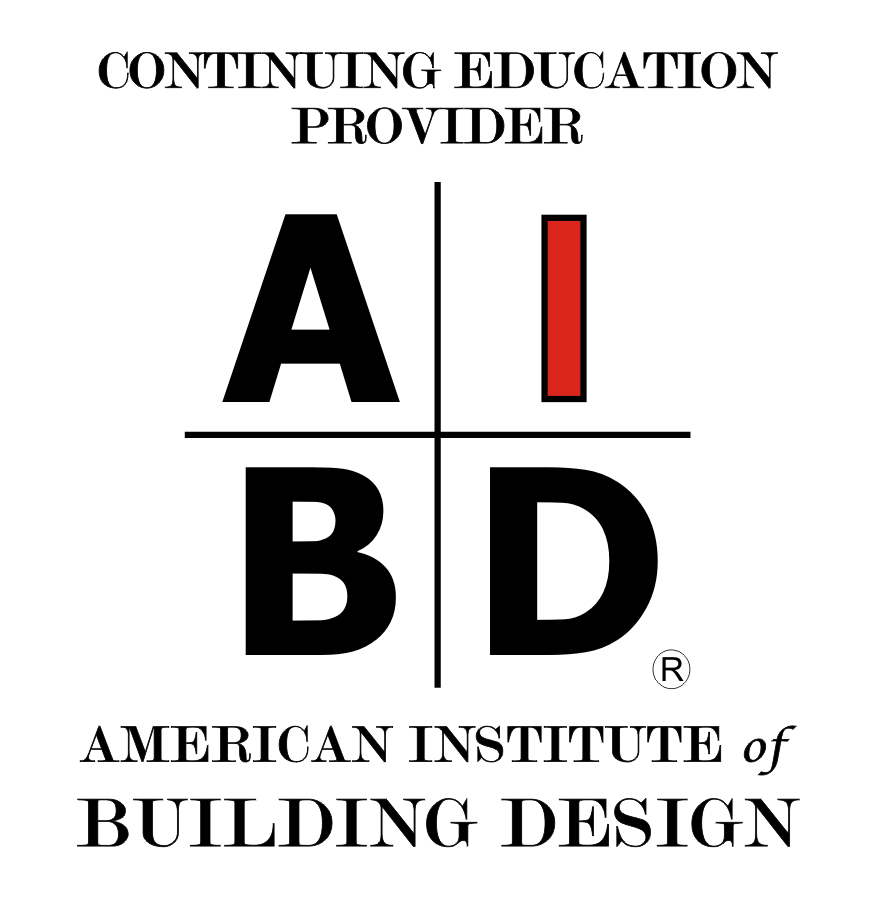This CE Center article is no longer eligible for receiving credits.
One of the most often cited explanations of sustainable design is this: “Humanity has the ability to make development sustainable to ensure that it meets the needs of the present without compromising the ability of future generations to meet their own needs.”
This description first appeared in the 1987 study Our Common Future, commissioned by the United Nations. Although there was a growing realization of its importance, the available tools, know-how, and market-driven motivation did not support an explosion of sustainable development at that time. Limited research had been conducted to explore what contributed to a sustainable environment. The first building standard ever focused on reducing energy consumption, ANSI/ASHRAE/IES Standard 90, was still in its infancy. The dearth of information led to some misguided perceptions on what constituted sustainable design. For example, windows were largely regarded as detriments to building efficiency, not vital for human occupancy.
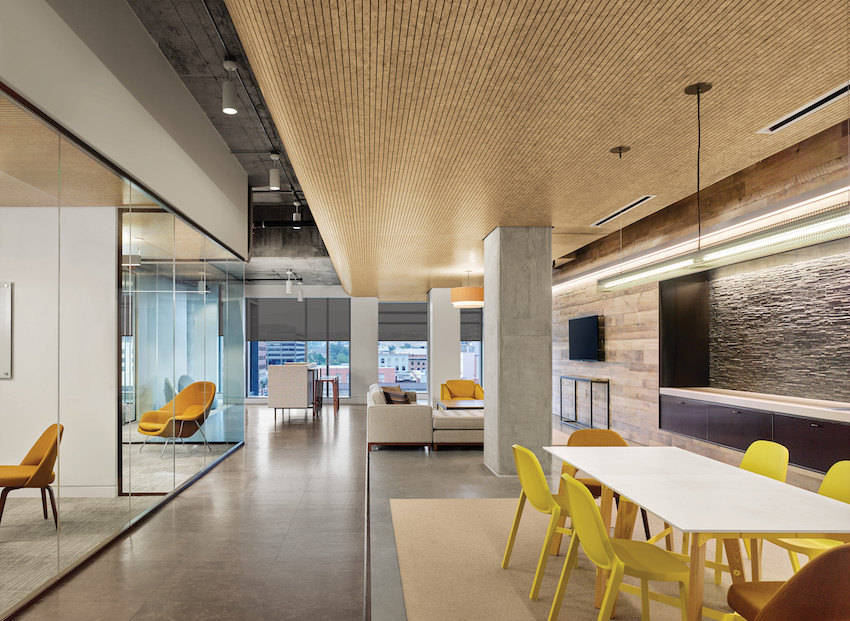
Photo © James Steinkamp Photography
Automated shading systems are powerful tools that contribute toward earning many different green building criteria. The Zurich Headquarters (Schaumburg, Illinois), shown here, is pursuing a LEED Platinum certification.
Thirty years later, the industry has created much of the infrastructure necessary to support a real sustainability movement. New technologies have been developed to offer a larger number of more efficient products and building systems. Several third-party certifications exist to quantify and qualify product life cycles, volatile organic compound (VOC) emissions, and material ingredient lists. Extensive research has been conducted since 1987 to dive more deeply into almost every aspect of sustainable design and its impact on the environment, economy, and occupant health. Concluding, for example, that providing building occupants with access to glare-free daylight and views has a positive impact on their mood, productivity, health, and well-being. Several green building rating systems have emerged to provide a structure, guidance, and a level of standardization to aid the design community in their sustainable design efforts.
These advancements in technology, evidence-based direction, and green building programs better equip designers to achieve the basic goals of sustainable design, which are, as defined by the General Services Administration (GSA), the agency tasked with managing government buildings and real estate (among other things): reducing consumption of nonrenewable resources, minimizing waste, and creating healthy, productive environments. Now it’s time for the sustainable rubber to meet the green-built road and examine how designers can use the available products and systems to create projects that meet the criteria in the various green building programs.
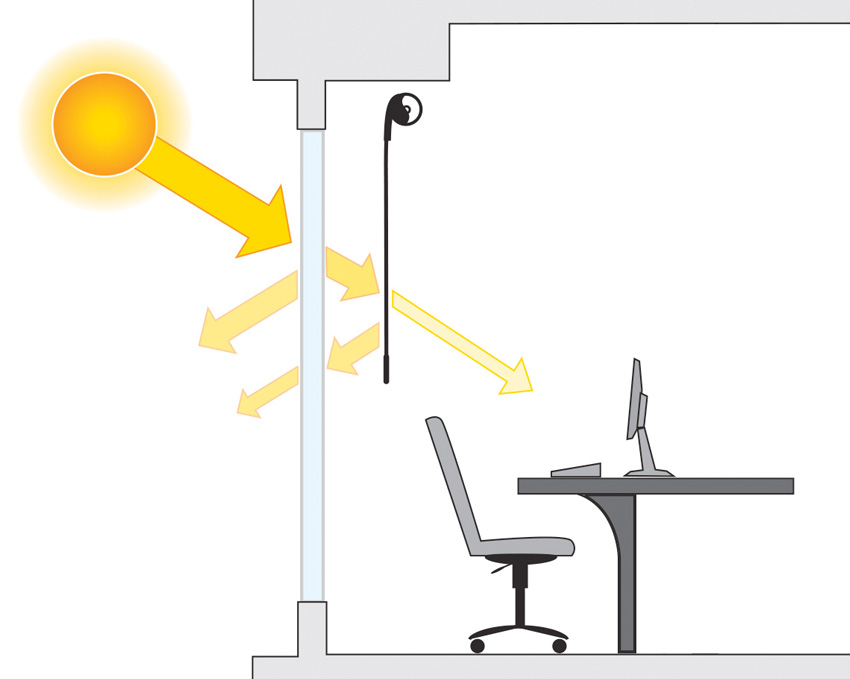
Image © Lutron Electronics
High-performance solar fabric creates an effective thermal barrier at the window by reflecting much of the radiant solar energy back outside or trapping the energy between the glass and the fabric.
Although the specific focus and scope of any particular green building program may differ from another, they all seem to agree that providing occupants with access to glare-free daylight and exterior views is a basic tenet of sustainable design. One product uniquely suited to meet these demands is the automated shading system, and it is a solution that is less-involved, from a design perspective, than the efforts necessary to satisfy many of the other sustainable criteria. “When considering the spectrum of sustainable design solutions, automated shades are an easy yet powerful way to address both indoor environmental quality and energy-efficiency considerations,” explains Brent Protzman, director of building science and standard development, Lutron Electronics.
This course will explore how automated shading systems and environmentally friendly solar fabric contribute toward satisfying sustainable design criteria found in four different green building rating systems in use today: Leadership in Energy and Environmental Design v4 (LEED v4), the WELL Building standard (WELL), the Living Building Challenge, and the latest version of ANSI/ASHRAE/USGBC/IES Standard 189.1 (Standard 189.1).
The Sustainability Benefits of Shades
The intertwined nature of the health of the environment, health of building occupants, and the economic value that must be created in a business venture is one of the aspects that makes sustainable design so compelling. It can also leave designers in a bit of a quandary, as it requires the simultaneous achievement of goals that sometimes seem at odds with one another. For example, providing people with access to daylight and views is an important piece of sustainable design, but that access can cause discomfort and wreak havoc on HVAC system efficiency and productivity if glare and solar heat gain occur.
Luckily, there is a solution that enables designers to balance the demand for more daylight exposure with the need to provide adequate protection from solar heat gain and glare. Automated shading systems are essentially sustainability multitaskers at the window. They actively and automatically manage the presence of daylight in the space, which enables automated shading systems to make a significant contribution to sustainable criteria in many ways. These systems can mitigate solar heat gain and maximize the presence of glare-free daylight on the interior. Beyond providing access to daylight that will not disrupt the performance of employees or cause discomfort, maximizing the presence of daylight in a space can also save lighting energy if the electric lighting system is equipped to reduce light levels when sufficient daylight is available. Solar shades can provide a continuous view to the outdoors regardless of whether the shade fabric is deployed or retracted, and the materials and fabrics used in the system can satisfy many of the materials criteria found in the different green building programs popular today.
Mitigate Solar Heat Gain
Keeping the interior sufficiently cool is, typically, one of the largest energy uses in a nonresidential building. For years, designing a facade with many windows seemed counterproductive to building efficiency because direct sunlight would pass through the windows, pour into the space, and heat it up, requiring the HVAC system to expend more energy to cool the interior down again. The problem, referred to as solar heat gain, occurred because direct beam solar radiation contains a lot of infrared radiation, which becomes radiant heat when it is absorbed. Sustainable design criteria, however, recognize the importance of offering building occupants exposure to daylight and views, forcing designers to add windows in a way that will not eat energy.
Shading systems made from high-performance solar fabric provide thermal management of solar radiation in two ways. When the fabric is deployed, it creates an effective thermal barrier at the window by reflecting a significant portion of the radiant solar energy that passes through the window off of the exterior face of the fabric and back outside and trapping much of the remaining energy in the space between the glass and the fabric. Buildings equipped with shades that have a high solar reflectance have been shown to deliver HVAC energy savings in the range of 3 to 22 percent, depending upon facade design and other project properties.
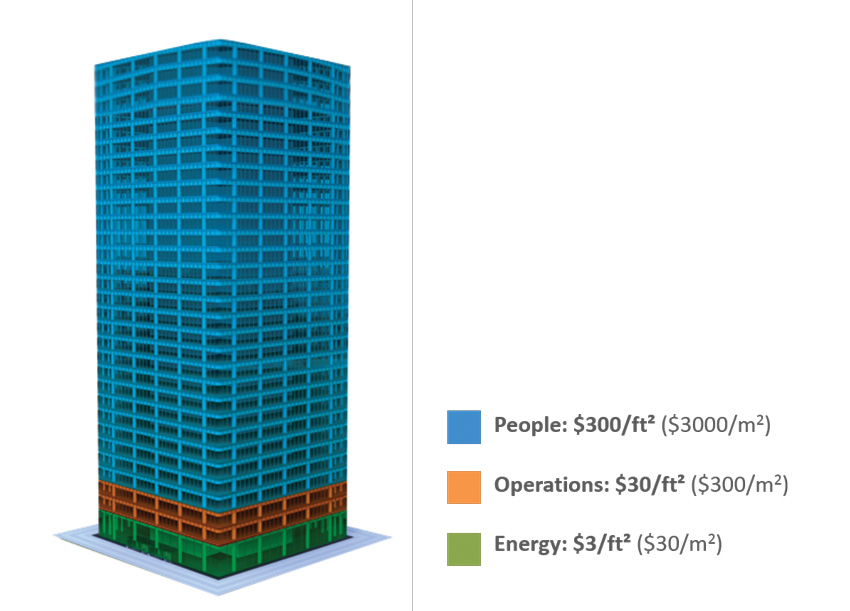
Image courtesy of Lutron Electronics
According to the Rocky Mountain Institute, improving employee comfort and productivity may offer a greater bottom-line benefit than energy savings.
Maximize the Presence of Glare-Free and Usable Daylight
In 2012, the Rocky Mountain Institute published the Guide to Building the Case for Deep Energy Retrofits, in which it explained that while energy costs represent roughly $3 per square foot per year, the cost of people in a building is closer to $300 per square foot per year, putting a premium on the impact that improvements in productivity can make to the bottom line. These findings align with the goals of sustainable design to create healthy and productive spaces, positing that creating spaces that are good environments to work will, in turn, contribute toward good work getting done. Studies conducted by the Heschong Mahone Group and others have shown that providing access to daylight and views throughout the day creates spaces in which employees are more satisfied, students learn faster, and patients experience shorter recovery times. In short, daylit spaces and spaces that offer a view of the outdoors enable the people within to be more productive.
Unfortunately, daylight is an incredibly dynamic light source, and not all daylight is usable or practical in a typical interior environment. For example, on a sunny day, the intensity of daylight may reach up to, or over, 10,000 footcandles (fc). Light with this level of intensity may cause discomfort and distort the balance of the visual environment if it passed freely into a space. The daylighting industry recognizes the different types of daylight and has attempted to distinguish between useful daylight and daylight that should be controlled, coining the phrase “useful daylight” to describe daylight that will not cause glare or discomfort to occupants in a building.
In an office setting, the range of useful daylight illuminance is generally considered to be between 10 fc and 200 fc measured at the workplane. This range of useful daylight aligns with recommendations developed by the IES that define optimal light levels for various visual tasks. The IES recommends that office buildings maintain 30 fc at the workplane in private offices, open office spaces, and conference rooms.
Automated solar shades maximize the presence of usable daylight in the interior space by automatically deploying when daylight is direct or overly intense to protect the interior environment, and then automatically retracting when useful, ambient daylight is available. This automated functionality delivers two important sustainability benefits. It maximizes a building occupant’s exposure and access to useful and glare-free levels of daylight because the shades are only deployed when daylight must be managed and are raised whenever possible. And, if the lighting system is equipped to reduce lighting levels or turn off when sufficient daylight is available, an automated shading system will create the greatest potential for lighting energy savings because it allows the greatest amount of usable daylight into the interior.
One of the most often cited explanations of sustainable design is this: “Humanity has the ability to make development sustainable to ensure that it meets the needs of the present without compromising the ability of future generations to meet their own needs.”
This description first appeared in the 1987 study Our Common Future, commissioned by the United Nations. Although there was a growing realization of its importance, the available tools, know-how, and market-driven motivation did not support an explosion of sustainable development at that time. Limited research had been conducted to explore what contributed to a sustainable environment. The first building standard ever focused on reducing energy consumption, ANSI/ASHRAE/IES Standard 90, was still in its infancy. The dearth of information led to some misguided perceptions on what constituted sustainable design. For example, windows were largely regarded as detriments to building efficiency, not vital for human occupancy.

Photo © James Steinkamp Photography
Automated shading systems are powerful tools that contribute toward earning many different green building criteria. The Zurich Headquarters (Schaumburg, Illinois), shown here, is pursuing a LEED Platinum certification.
Thirty years later, the industry has created much of the infrastructure necessary to support a real sustainability movement. New technologies have been developed to offer a larger number of more efficient products and building systems. Several third-party certifications exist to quantify and qualify product life cycles, volatile organic compound (VOC) emissions, and material ingredient lists. Extensive research has been conducted since 1987 to dive more deeply into almost every aspect of sustainable design and its impact on the environment, economy, and occupant health. Concluding, for example, that providing building occupants with access to glare-free daylight and views has a positive impact on their mood, productivity, health, and well-being. Several green building rating systems have emerged to provide a structure, guidance, and a level of standardization to aid the design community in their sustainable design efforts.
These advancements in technology, evidence-based direction, and green building programs better equip designers to achieve the basic goals of sustainable design, which are, as defined by the General Services Administration (GSA), the agency tasked with managing government buildings and real estate (among other things): reducing consumption of nonrenewable resources, minimizing waste, and creating healthy, productive environments. Now it’s time for the sustainable rubber to meet the green-built road and examine how designers can use the available products and systems to create projects that meet the criteria in the various green building programs.

Image © Lutron Electronics
High-performance solar fabric creates an effective thermal barrier at the window by reflecting much of the radiant solar energy back outside or trapping the energy between the glass and the fabric.
Although the specific focus and scope of any particular green building program may differ from another, they all seem to agree that providing occupants with access to glare-free daylight and exterior views is a basic tenet of sustainable design. One product uniquely suited to meet these demands is the automated shading system, and it is a solution that is less-involved, from a design perspective, than the efforts necessary to satisfy many of the other sustainable criteria. “When considering the spectrum of sustainable design solutions, automated shades are an easy yet powerful way to address both indoor environmental quality and energy-efficiency considerations,” explains Brent Protzman, director of building science and standard development, Lutron Electronics.
This course will explore how automated shading systems and environmentally friendly solar fabric contribute toward satisfying sustainable design criteria found in four different green building rating systems in use today: Leadership in Energy and Environmental Design v4 (LEED v4), the WELL Building standard (WELL), the Living Building Challenge, and the latest version of ANSI/ASHRAE/USGBC/IES Standard 189.1 (Standard 189.1).
The Sustainability Benefits of Shades
The intertwined nature of the health of the environment, health of building occupants, and the economic value that must be created in a business venture is one of the aspects that makes sustainable design so compelling. It can also leave designers in a bit of a quandary, as it requires the simultaneous achievement of goals that sometimes seem at odds with one another. For example, providing people with access to daylight and views is an important piece of sustainable design, but that access can cause discomfort and wreak havoc on HVAC system efficiency and productivity if glare and solar heat gain occur.
Luckily, there is a solution that enables designers to balance the demand for more daylight exposure with the need to provide adequate protection from solar heat gain and glare. Automated shading systems are essentially sustainability multitaskers at the window. They actively and automatically manage the presence of daylight in the space, which enables automated shading systems to make a significant contribution to sustainable criteria in many ways. These systems can mitigate solar heat gain and maximize the presence of glare-free daylight on the interior. Beyond providing access to daylight that will not disrupt the performance of employees or cause discomfort, maximizing the presence of daylight in a space can also save lighting energy if the electric lighting system is equipped to reduce light levels when sufficient daylight is available. Solar shades can provide a continuous view to the outdoors regardless of whether the shade fabric is deployed or retracted, and the materials and fabrics used in the system can satisfy many of the materials criteria found in the different green building programs popular today.
Mitigate Solar Heat Gain
Keeping the interior sufficiently cool is, typically, one of the largest energy uses in a nonresidential building. For years, designing a facade with many windows seemed counterproductive to building efficiency because direct sunlight would pass through the windows, pour into the space, and heat it up, requiring the HVAC system to expend more energy to cool the interior down again. The problem, referred to as solar heat gain, occurred because direct beam solar radiation contains a lot of infrared radiation, which becomes radiant heat when it is absorbed. Sustainable design criteria, however, recognize the importance of offering building occupants exposure to daylight and views, forcing designers to add windows in a way that will not eat energy.
Shading systems made from high-performance solar fabric provide thermal management of solar radiation in two ways. When the fabric is deployed, it creates an effective thermal barrier at the window by reflecting a significant portion of the radiant solar energy that passes through the window off of the exterior face of the fabric and back outside and trapping much of the remaining energy in the space between the glass and the fabric. Buildings equipped with shades that have a high solar reflectance have been shown to deliver HVAC energy savings in the range of 3 to 22 percent, depending upon facade design and other project properties.

Image courtesy of Lutron Electronics
According to the Rocky Mountain Institute, improving employee comfort and productivity may offer a greater bottom-line benefit than energy savings.
Maximize the Presence of Glare-Free and Usable Daylight
In 2012, the Rocky Mountain Institute published the Guide to Building the Case for Deep Energy Retrofits, in which it explained that while energy costs represent roughly $3 per square foot per year, the cost of people in a building is closer to $300 per square foot per year, putting a premium on the impact that improvements in productivity can make to the bottom line. These findings align with the goals of sustainable design to create healthy and productive spaces, positing that creating spaces that are good environments to work will, in turn, contribute toward good work getting done. Studies conducted by the Heschong Mahone Group and others have shown that providing access to daylight and views throughout the day creates spaces in which employees are more satisfied, students learn faster, and patients experience shorter recovery times. In short, daylit spaces and spaces that offer a view of the outdoors enable the people within to be more productive.
Unfortunately, daylight is an incredibly dynamic light source, and not all daylight is usable or practical in a typical interior environment. For example, on a sunny day, the intensity of daylight may reach up to, or over, 10,000 footcandles (fc). Light with this level of intensity may cause discomfort and distort the balance of the visual environment if it passed freely into a space. The daylighting industry recognizes the different types of daylight and has attempted to distinguish between useful daylight and daylight that should be controlled, coining the phrase “useful daylight” to describe daylight that will not cause glare or discomfort to occupants in a building.
In an office setting, the range of useful daylight illuminance is generally considered to be between 10 fc and 200 fc measured at the workplane. This range of useful daylight aligns with recommendations developed by the IES that define optimal light levels for various visual tasks. The IES recommends that office buildings maintain 30 fc at the workplane in private offices, open office spaces, and conference rooms.
Automated solar shades maximize the presence of usable daylight in the interior space by automatically deploying when daylight is direct or overly intense to protect the interior environment, and then automatically retracting when useful, ambient daylight is available. This automated functionality delivers two important sustainability benefits. It maximizes a building occupant’s exposure and access to useful and glare-free levels of daylight because the shades are only deployed when daylight must be managed and are raised whenever possible. And, if the lighting system is equipped to reduce lighting levels or turn off when sufficient daylight is available, an automated shading system will create the greatest potential for lighting energy savings because it allows the greatest amount of usable daylight into the interior.
Made from Environmentally Friendly Materials
Although energy efficiency gets a lot of attention in the sustainable space, green building also emphasizes the use of products and materials that make a limited environmental impact over their lifetime. These life-cycle evaluations consider multiple facets of a product’s life, from the materials used during production and the excavation practices of those materials to their presence in an indoor environment and in disposal once the product has served its purpose.
One of the largest challenges facing designers who try to use sustainable materials is that it requires the disclosure by the manufacturers of their processes and secret sauces used to create their various devices, fabrics, paints, finishes, etc. As a result, these sustainable programs encourage and incentivize designers to work with manufacturers taking the extra steps to act in an environmentally responsible way and then take the time to disclose their product information so that the product may be evaluated by a third party.
Shade materials that have been reviewed and certified by a third-party organization, such as the GREENGUARD Environmental Institute (GREENGUARD) or Cradle-to-Cradle, can support sustainable efforts and contribute toward meeting sustainable materials thresholds required by these various rating systems and green building standards.
A Closer Look at Automated Shading and Sustainable Design Criteria
Today, there are several green building rating systems and standards being used to help designers create sustainable buildings, including LEED v4, WELL, the Living Building Challenge, and Standard 189.1. While the criteria vary from program to program, automated shades offer impressive contributions in achieving project certifications from each of the identified systems.
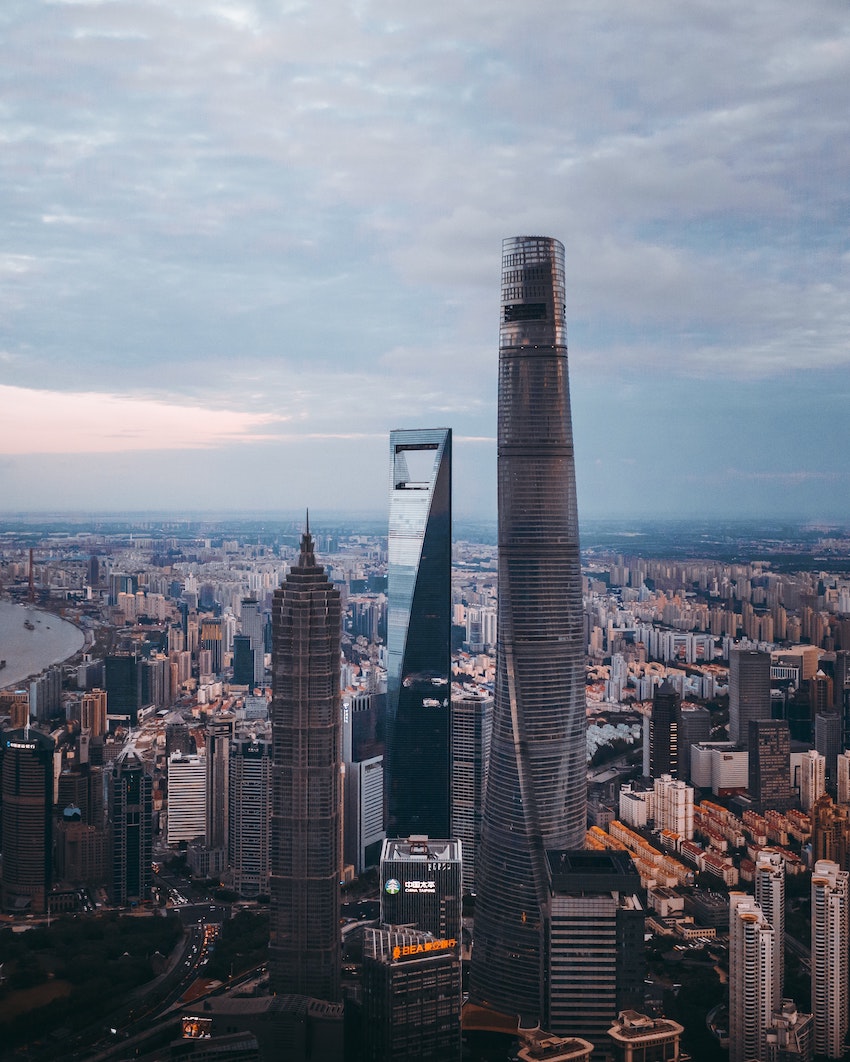
Image courtesy of Lutron Electronics
The Shanghai Tower, the world’s second-tallest skyscraper, also featured an automated shading system and achieved a LEED Platinum rating for Core and Shell.
LEED v4
LEED v4 is the newest version of the LEED dynasty, touted as the most widely used green building rating system in the world. It offers a green building rating system for all types of buildings, anywhere on the globe, in any stage of their life cycle. Over 2.2 million square feet is LEED certified every day, with more than 90,000 LEED-certified projects found worldwide.
The LEED green building rating system is organized into eight categories: Location and Transportation (LT), Sustainable Sites (SS), Water Efficiency (WE), Energy and Atmosphere (EA), Materials and Resources (MR), Indoor Environmental Quality (EQ), Innovation (IN), and Regional Priority (RP). Each category contains various prerequisites that must be satisfied for a project to even be considered for a LEED certification and available credits, each assigned a point value. Projects earn points based on the credits they successfully complete.
There are four levels of LEED certification that can be achieved based upon the number of points earned by the project. LEED-Certified projects earned 40–49 points. LEED Silver projects earned 50–59 LEED points. LEED Gold projects earned 60–79 points. The ultimate LEED award is LEED Platinum. LEED Platinum projects earn 80+ points.
While LEED is a voluntary green building program, many state and local governments are adopting LEED requirements into their building codes, which makes satisfying the sustainable criteria mandatory in certain jurisdictions. Federal buildings have been required to comply with LEED practices for some time. The GSA requires that the new construction and substantial renovation of any federally owned facilities meet or exceed the standards for LEED Gold certification.
Automated shading systems can serve as a powerful tool in satisfying sustainable criteria across several of the LEED categories. Many of those potential LEED credits are explored here. Please note that the credit number (example: EA credit 2) may be different depending upon the specific LEED v4 rating system under consideration. The credits referenced in this course correspond to the LEED v4 for Building Design and Construction (BD+C) rating system.
EA Credit 2: Optimize Energy Performance (Up to 20 Points)
The intent of this credit is to encourage projects to achieve increasing levels of energy performance above the baseline compliance with ASHRAE 90.1-2010, required as a LEED prerequisite. Automated shading systems may be included in the whole building project simulation to demonstrate the energy savings achieved by reducing the HVAC load through the mitigation of solar heat gain and reducing the electrical lighting load by maximizing the presence of usable daylight in the interior space, and then reducing electric light levels when daylight is available.
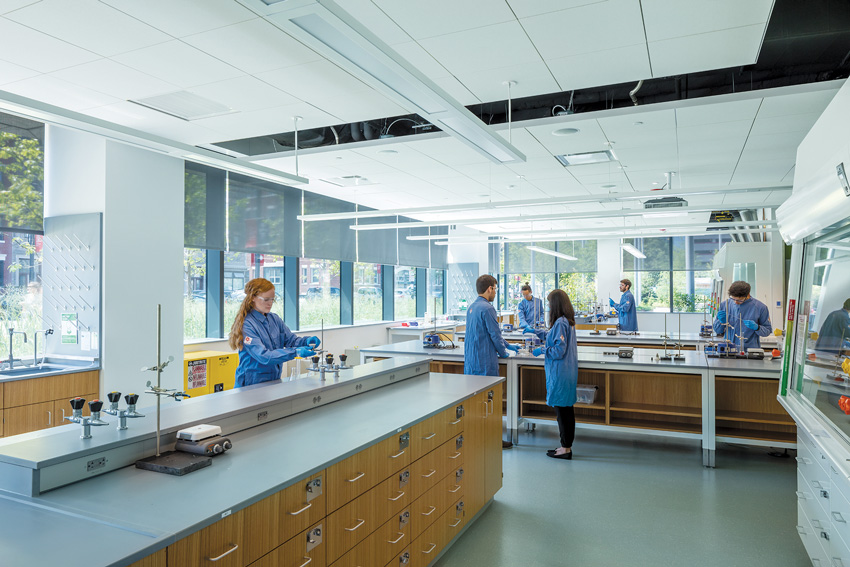
Photo © Warren Jagger Photography
In the Northeastern University Interdisciplinary Science and Engineering Complex (ISEC), designed by Payette, exposure to useful daylight levels helps to regulate circadian rhythms, improve mood and satisfaction, and create interior spaces where people learn and heal faster.
MR Credit 3: Building Product Disclosure and Optimization—Sourcing Raw Materials (2 Points)
The intent of this credit is to encourage the use of products and materials for which life-cycle information is available and that have environmentally, economically, and socially preferable life-cycle impacts. It also rewards project teams for selecting products verified to have been extracted or sourced in a responsible manner. One point is available for Raw Material Source and Extraction Reporting. Another point is available for Leadership Extraction Practices.
Projects earn one point for demonstrating leadership in responsible extraction practices by selecting products that meet at least one of the responsible extraction criteria for at least 25 percent, by cost, of the total value of permanently installed building products on the project. The responsible extraction criteria include, but are not limited to, choosing bio-based products that meet the Sustainable Agriculture Network’s Sustainable Agriculture Standard, wood products certified by the Forest Stewardship Council, or a USGBC-approved equivalent, products that have been salvaged, refurbished or reused, and products that contain recycled content.
When selecting an automated shading system, certain solar shade fabrics will contribute toward the threshold for satisfying this credit, but the potential contribution here is not limited to shade fabric. Many elements of the system can be produced with aluminum that contains pre- and post-industry recycled content, including shade tubes, the metal housing that conceals the tube, and the hembars. All of these products can contribute toward achieving the Leadership Extraction Practices point.
MR Credit 4: Building Product Disclosure and Optimization—Material Ingredients (2 Points)
This credit was designed to encourage the use of products for which the chemical ingredients in the product are disclosed using an accepted methodology. In order to satisfy this credit, projects must feature at least 20 different permanently installed products from at least five different manufacturers that use an approved program to demonstrate the chemical inventory of the product to at least 0.1 percent (1,000 ppm). Approved disclosure methods include, but are not limited to, suitable manufacturer inventory, health product declaration (HPD), and Cradle-to-Cradle certification. Selecting solar shade fabrics that have an HPD or are Cradle-to-Cradle certified will help to meet the minimum threshold for satisfying this credit.
EQ Credit 2: Low-emitting Materials (3 Points)
This LEED v4 credit is intended to reduce concentrations of chemical contaminants that can damage air quality, human health, productivity, and the environment. Building products must be tested and determined compliant in accordance with California Department of Public Health (CDPH) Standard Method v1.1-2010. Fabrics which have earned a GREENGUARD Gold certification are recognized as a compliant option for this credit, as the GREENGUARD Gold requirements are more stringent than those in the CDPH Standard Method v1.1. Specifying window shade fabric that is GREENGUARD Gold certified will contribute toward earning this credit.
EQ Credit 7: Daylight (1–3 Points)
The intent of this credit is to connect building occupants with the outdoors, reinforce circadian rhythms, and reduce the use of electrical lighting by introducing daylight into the space. Earning this credit requires the inclusion of manual or automatic glare-control devices in all regularly occupied spaces. In addition to the glare-control devices, supporting simulations or measurements must be completed to prove that the design achieves certain daylighting objectives.
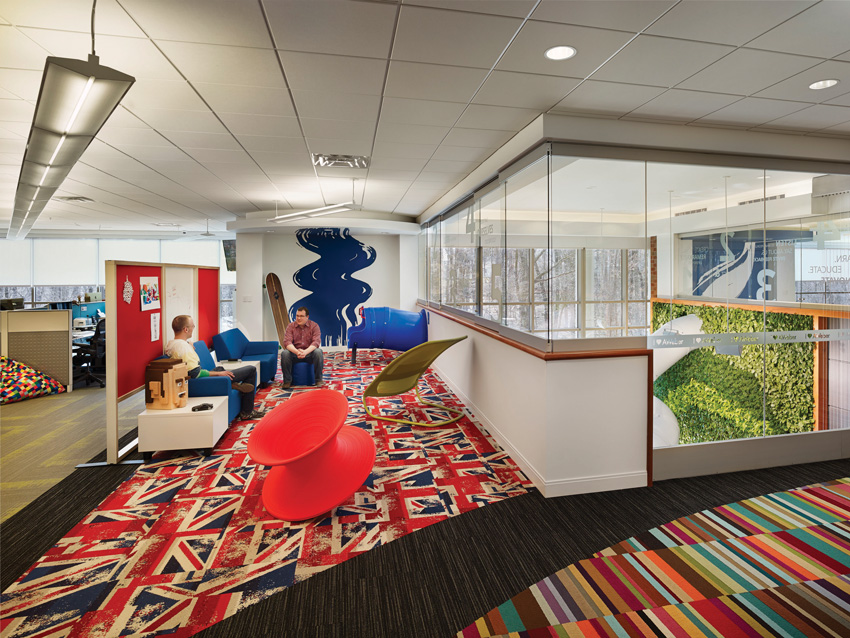
Photo © Halkin-Mason Photography
The use of automated shades over manual shades will make it easier to meet the specific daylighting goals of the LEED v4 Daylight credit, including spatial daylight autonomy (sDA) goals, because the shade fabric is retracted whenever glare-free daylight is available.
Automated shades are recognized as an automatic glare-control device. The selection of automated shades over manual shades will also make it easier to meet some of the daylighting goals, such as spatial daylight autonomy (sDA). The sDA metric describes the percentage of the area in a room or building where a given daylight autonomy value is achieved. For example, Option One in the LEED v4 Daylight credit requires a demonstration of the percentage of the building that receives at least 300 lux for at least 50 percent of the workday. The computer simulation must show that the design achieves an sDA of at least 55 percent. Automated shades dramatically increase the sDA of a space, because they maximize the amount of useful daylight allowed into the building.
It should be noted that a ruling issued on January 27, 2017 determined that projects with an automated interior window shade system are exempt from the requirement to simulate the annual sunlight exposure (ASE) value of the space.
WELL Building Standard
In 2014, the International WELL Building Institute (IWBI) launched the WELL Building Standard version 1.0 (WELL). This standard marks the first sustainable guideline dedicated to enhancing people’s health and well-being through the built environment. Developed with the input of physicians, scientists, and industry professionals, this performance-based certification system combines best practices in design and construction and evidence-based medical and scientific research to create buildings that help people work, live, perform, and feel their best.
WELL organizes its performance criteria into seven categories considered relevant to the health and well-being of building occupants. They are: air, water, nourishment, light, fitness, comfort, and mind. These categories form the seven concepts of the WELL Building Standard. Each concept contains criteria labeled as either a mandatory precondition that must be met for a project to earn any level of WELL certification or an optional optimization that may be met to earn higher levels of certification.
There are three levels of WELL Building certification: Silver, Gold, and Platinum. A Silver certification indicates that the project has met 100 percent of the preconditions. A Gold certification is earned by projects that meet 100 percent of the preconditions and 40 percent of the available optimizations. The highest level of certification, Platinum, is reserved for projects that satisfy all preconditions and at least 80 percent of the possible optimizations.
As of September 2017, there were more than 530 WELL-certified projects, representing over 100 million square feet of WELL-certified space in the world. While adoption is voluntary, trends of putting people first and creating sustainable and healthy workspaces are newsworthy and notable in today’s culture. As a healthy building standard gains traction in the design and construction community, automated shading systems emerge as powerful tools to satisfy these wellness-minded sustainable criteria.
AIR 04: VOC Reduction (Precondition)
This credit is focused on minimizing the effect of the VOCs found in building materials on indoor air quality. To that end, this credit requires that the VOC emissions of at least 95 percent (by cost) of all newly purchased furniture and furnishings meet VOC emissions limits set by a few specific standards. Products that have received GREENGUARD Gold certifications can be used as an accepted equivalent to the identified standards. Window shade fabrics that are GREENGUARD Gold certified comply with this requirement and will contribute toward reaching the 95 percent threshold necessary to satisfy the precondition.
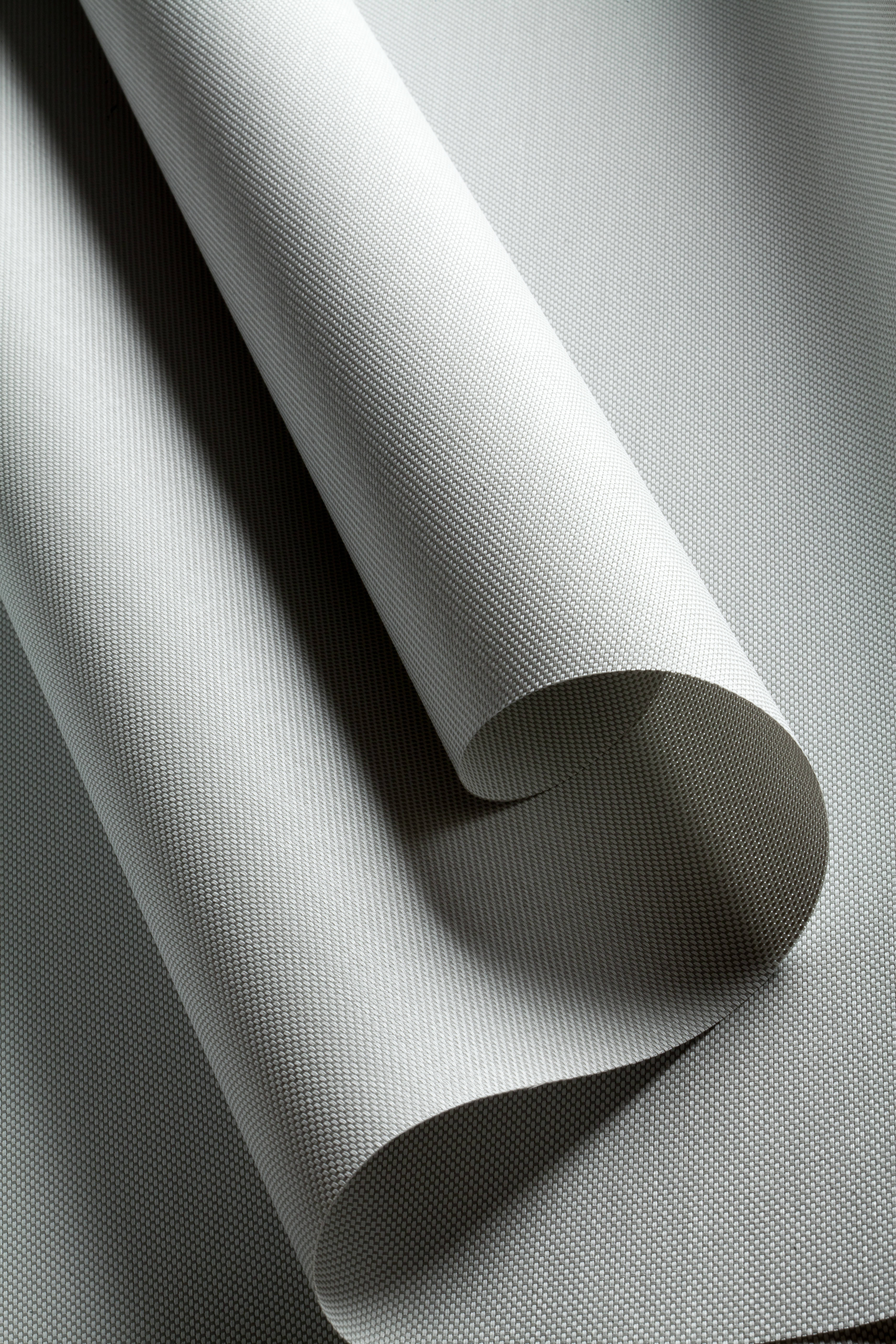
Photo © Lutron Electronics
Certain shading fabrics can contribute toward meeting environmentally friendly materials thresholds, such as shading fabric made from recycled water bottles (shown here).
LIGHT 56: Solar Glare Control (Precondition)
A direct view of the sun or intense daylight at the window can cause glare. Glare occurs when an element in the visual field, either a light source or the reflection of a light source, is significantly brighter than everything else in the surrounding visual environment. When the difference in illuminance levels is too great, the eye cannot effectively adapt and the resulting eye strain leads to headaches and fatigue. The intent of this credit is to avoid glare from the sun by blocking or reflecting direct sunlight away from occupants.
It should be noted that even if automated shading systems are outside of a project budget, quite a few sustainable design credits may still be realized with the inclusion of manual shades at the window. This credit is one example. It requires either controllable or automatic window shading systems be provided to protect the interior and occupants from glare conditions. Manual shading systems may also support sustainable criteria by featuring environmentally friendly fabric and components.
LIGHT 60: Automated Shading and Dimming Controls (Optimization)
Designing with daylight can be somewhat of a double-edged sword. While studies have shown that exposure to useful daylight levels helps to regulate circadian rhythms, improve mood and satisfaction, and create interior spaces where people learn and heal faster, exposure to glare causes discomfort and damages productivity. The previous credit, LIGHT 56, enables people in the building to prevent glare exposure by lowering a shade, either manually or automatically. Unfortunately, studies, such as “Measuring the Daylighting Impact of Automated and Manually Operated Shades” authored by Mudit Saxena, principal, Vistar Energy, and funded by Pacific Gas and Electric Company, through the California Emerging Technologies Coordinating Council, have concluded that the unpredictable control of manual shades and the likelihood that the shades will be pulled down even when diffuse, ambient daylight conditions exist undermines the original intent of the design and diminishes the positive impact that useful daylight can have in a space. The intent of this optimization credit is to encourage the use of automated shading systems so that the interior is protected from glare when direct and overly intense daylight conditions exist, and usable daylight is allowed into the building whenever it is available.
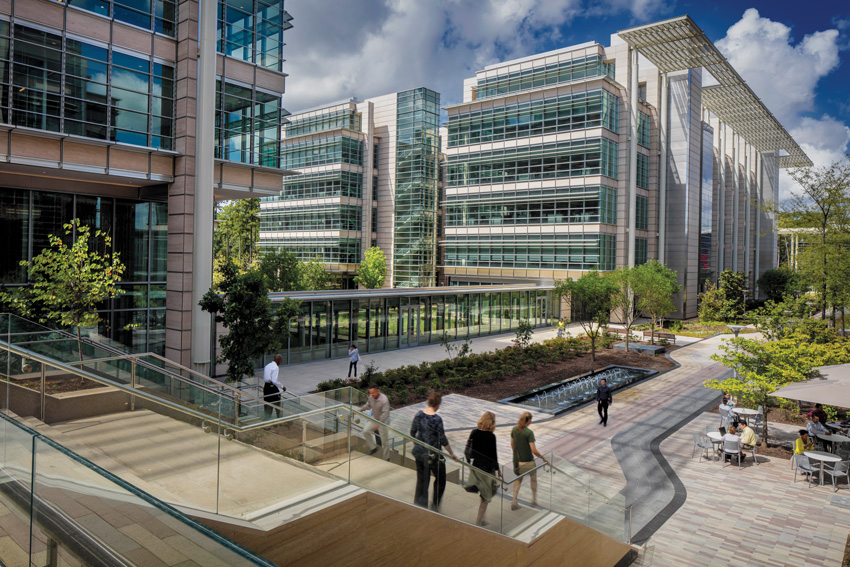
Photo © Joe Aker|AkerImaging
The Exxon Mobil Headquarters in Houston earned LEED Gold certification and features approximately 10,000 motorized shades, making it the largest motorized shading installation in the world.
Beyond automated shading, this credit encourages lighting systems to be equipped to reduce lighting energy use. The credit specifically requires that the lighting system be able to dim lights or turn them off when the space is unoccupied or when sufficient daylight is available. Because automated shading systems are designed to maximize the amount of usable daylight in the interior, the potential energy savings can be significant. In fact, coordinating the presence of electric light and daylight in a space equipped with automated shading systems can reduce daytime lighting energy usage by 65 percent or more.
LIGHT 62: Daylight Modeling (Optimization)
This credit mirrors the LEED v4 Daylight credit, which requires that daylight modeling be completed to demonstrate that the space satisfies certain daylighting objectives in terms of the spatial daylight autonomy (sDA) and annual sunlight exposure (ASE) it is designed to receive. Automated shades successfully increase the sDA value of a space.
COMFORT 74: Exterior Noise Intrusion (Precondition)
The intent of this credit is to reduce acoustic disruptions by limiting external noise intrusion. It specifies that the average sound pressure level from outside noise intrusion not exceed a specific level depending upon the type of project. (For example, 50 dBA is the maximum level of noise intrusion allowed for businesses). Some shade fabrics help spaces meet these external noise intrusion thresholds by absorbing sound waves. Look for fabrics that have published a noise reduction coefficient (NRC). NRC values range between 0 and 1, with 1 representing a surface that provides perfect absorption.
MIND 88: Biophilia I—Qualitative (Precondition)
The WELL Building rating system also requires a qualitative narrative, written by the design team, to explain how the project nurtures the innate human-nature connection. Automated shading systems contribute to this narrative in two ways. The automated system ensures that whenever glare-free conditions exist, the window shades are raised, providing an unobstructed view of the outdoors. Shade fabrics also offer the distinct ability to preserve a view to the outdoors, even when deployed to prevent glare and solar heat gain. Unlike louvers and blinds, which create a total visual barrier to manage daylight, the weave of certain solar fabrics allows the outside view to be visible through the shade, while still effectively diffusing, absorbing, and reflecting the harsh image of the sun’s orb or overly intense daylight.
The abilities to maximize the daily exposure to unobstructed outdoor views and manage daylight while preserving a view to the outdoors are two good points to include in the narrative required to satisfy this Biophilia I criteria.
The Living Building Challenge
The Living Building Challenge (LBC) is a green building certification program dedicated to creating buildings that are regenerative and self-sufficient. This creates an impressive distinction between green building rating systems such as LEED, which seek to make buildings function more efficiently than required by current energy standards, and the LBC vision, which is to create buildings that produce more energy than they use and collect and treat all water on-site.
The LBC is organized into seven performance areas called Petals. They are: Place, Water, Energy, Health + Happiness, Materials, Equity, and Beauty. Each Petal is sub-divided into Imperatives. There are up to 20 Imperatives in the Living Building Challenge, depending upon whether the project is considered a building, renovation, or landscape/infrastructure typology.
The program offers three unique certification pathways: Petal certification, Living Building certification, or a Zero Energy certification. Petal certification requires that the project satisfy all of the Imperatives in at least three of the seven Petals. One of the three satisfied Petals must be either Water, Energy, or Materials. In addition, Imperative 01 Limits to Growth and Imperative 20 Inspiration and Education must be achieved for Petal certification. For a project to earn Living Building certification, it must meet all Imperatives assigned to the project typology. Projects that earn the Zero Energy certification generate all necessary energy on-site without combustion.
Another distinguishing feature of LBC is that certification is based on actual performance and not simulation or modeling. All projects have a twelve-month performance period and are audited by a third party before they are awarded a certification.
Automated shading systems can contribute to satisfying three of the 20 LBC Imperatives.
Energy Petal: Imperative 06 Net Positive Energy
This Imperative requires that 105 percent of the project’s energy needs be supplied by on-site renewable energy on a net annual basis, without the use of on-site combustion. Projects must provide on-site energy storage for resiliency. This Imperative requires that projects optimize system efficiencies and generate their own energy.
Automated shading systems (working in coordination with the lighting system) offer the optimal solution for minimizing the use of electric lights and mitigating solar heat gain, while maintaining a connection between building occupants and the exterior space. While this represents only part of the larger solution necessary to achieve this objective, being able to significantly reduce the lighting and HVAC load on a project is a solid step in the right direction.
Health + Happiness Petal: Imperative 08 Healthy Interior Environment
The intent of the Health + Happiness Petal is to create spaces that offer the fundamental environmental conditions necessary to create robust, healthy interior environments. There are three Imperatives within the Health + Happiness Petal. Imperative 07 Civilized Environment requires that every regularly occupied space have operable windows that provide access to fresh air and daylight. Imperative 08 Healthy Interior Environment is focused on providing good indoor air quality. Imperative 09 Biophilic Environment is dedicated to nurturing the innate human/nature connection.
Automated shading systems can contribute toward supporting each of these Imperatives, but it most directly supports Imperative 08 Healthy Interior Environment. Selecting shade material that has been GREENGUARD Gold certified is a straightforward way to ensure that the VOC emissions from the shade fabric meet the requisite threshold.
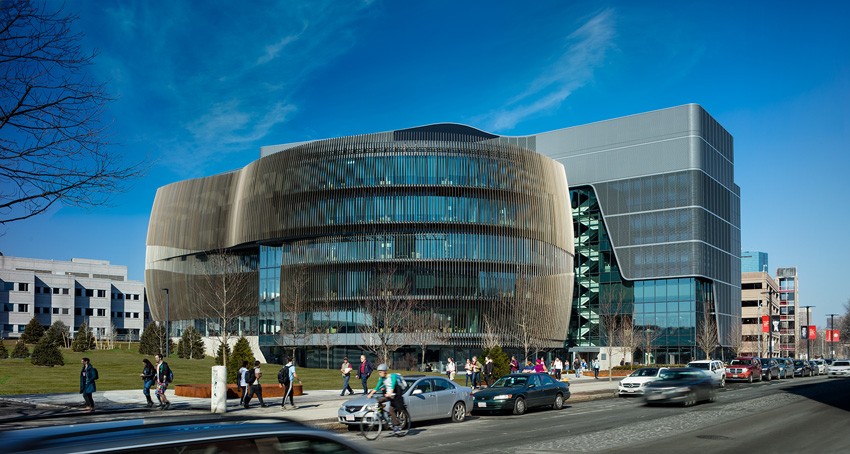
Photo © Warren Jagger Photography
Automated shading systems can contribute toward meeting indoor environmental quality, energy efficiency, and environmentally friendly materials thresholds incorporated into many of the green building systems used today.
Materials Petal: Imperative 10 Red List
This Imperative contains a list of 22 materials and chemicals recognized as the worst-in-class materials prevalent in the building industry. Referred to as the Red List, it includes: asbestos, chromium VI, mercury, and polyvinyl chloride (PVC). In order to satisfy this Petal, the project cannot contain any of the materials or substances identified on the Red List. Selecting solar shades with HPDs and full disclosures of all intentionally added ingredients offers designers the necessary transparency to ensure that the specified solar fabrics support this sustainable goal. PVC-free shade materials often comply with this Imperative.
ANSI/ASHRAE/USGBC/IES Standard 189.1-2014
The ANSI/ASHRAE/USGBC/IES Standard 189.1: Standard for the Design of High-Performance Green Buildings Except Low-Rise Residential Buildings (189.1) is a green building standard, not a green building rating system. As a standard, 189.1 is designed to be adopted by a state or local jurisdiction and enforced by building officials and inspectors, just as the various versions of the ANSI/ASHRAE/IES 90.1 and IECC energy standards are used. In 2010, the U.S. Army officially adopted 189.1, and all new building construction and major renovation projects must be designed in compliance with this green building standard.
This national model green code is comprised of minimal requirements designed to improve the environmental and health performance of building sites and structures. The areas upon which it focuses are similar to those found in LEED and other green building rating systems, including: energy efficiency, indoor environmental quality, water use efficiency, site sustainability, materials and resources, and construction and operation plans.
Automated Shades the Alternative to 7.4.2.5 Permanent Projections
In ASHRAE 189.1-2014, automated solar shades are recognized as an alternative compliance path for requirement 7.4.2.5 Permanent Projections, which requires that vertical fenestration be shaded with permanent projections on the west, south, and east in certain climate zones. Automated shades are programmed to precisely position solar shades at the optimal height throughout the day to defend the interior against solar heat gain and glare. No manual manipulation is necessary, although localized manual control is offered to allow for a temporary override.
While automated shading systems are considered a suitable and compliant solution, manual blinds and shades are not. Without the ability to program and automate the position of the daylight management apparatus, the manual solutions must be modeled in the worst-case scenario, which would be completely retracted, so that the shades offer no assistance in the mitigation of solar heat gain or glare prevention. When modeled in this fashion, the manual shades and blinds do not meet the basic levels of daylight management satisfied by the static yet deployed permanent projections.
8.4.1.3 Office Space Shading
Provision 8.4.1.3 Office Space Shading requires that each west-, south-, and east-facing facade be designed with a projection factor of at least 0.5. Installing automated shading devices on these vertical fenestrations will also satisfy this requirement.
The Next Version of 189.1
It should be noted that, in the next iteration, 189.1 will be combined with the International Green Construction Code (IgCC) written by the International Code Council (ICC) and referred to as “IgCC powered by 189.1” or the 2018 version of IgCC (2018-IgCC). This new and integrated green building standard is expected to be published in the summer of 2018.
A preliminary review of this new document reveals that shades will be able to satisfy more sustainable criteria points in the 2018 green building standard, including requirements concerning glare control and daylight modeling for metrics like sDA.
As the practice of sustainable design continues to evolve, designers will achieve new levels of green building performance. Spaces will become more comfortable, healthy, productive, environmentally friendly, and profitable. Automated shading systems and sustainable shade fabric will continue to serve as powerful tools in the designer’s arsenal for maximizing the exposure to glare-free daylight, mitigating solar heat gain, preserving views to the outdoors, and contributing toward satisfying materials thresholds. Whenever a window is placed in a facade, add an automated shade to make it more sustainable.
Jeanette Fitzgerald Pitts has written dozens of continuing education articles for Architectural Record covering a wide range of building products and practices.

|
Lutron Electronics, headquartered in Coopersburg, Pennsylvania, designs and manufactures energy-saving light controls, automated window treatments, and appliance modules for both residential and commercial applications. Its innovative, intuitive products can be used to control everything from a single light to every light and shade in a home or commercial building. www.lutron.com
|




